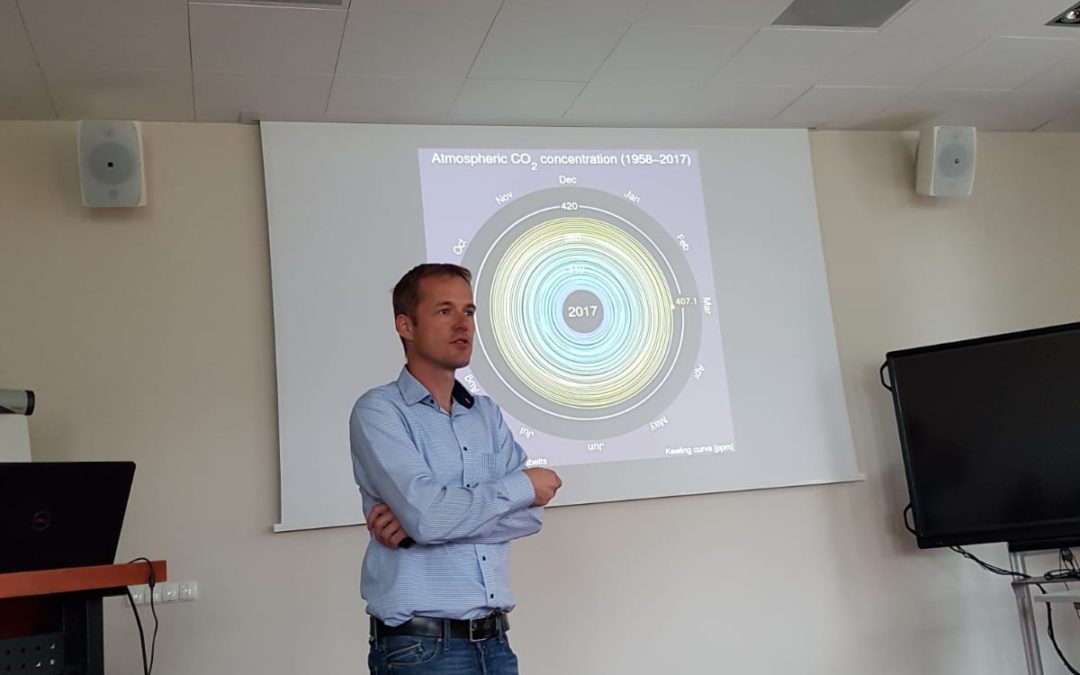Today, Dr. Frank Dimroth visited the foundation of Saule Research Institute and gave a talk on the first session of PerovsCUP, a series of seminars organized by the institute.
Dr. Dimroth is the group leader of III-V and concentrator photovoltaics at Fraunhofer-ISE, one of the most recognized institutions researching solar cells, and the home to the current world record with a power conversion efficiency of 46.0% in a quadruple-junction tandem solar cell under concentrated sunlight.
The one-hour presentation by Dr. Dimroth began with an overview of the current situation of the PV industry. Since 2008, many facilities went bankrupt, factories were shut down, and around 60000 employees were laid off due to this process. In order to reestablish the once strong segment, Europe has to improve the cooperation between policymakers and industrial players, otherwise, it will be hard to keep up with cost-competitiveness of Asian solar manufacturers.
Dr. Dimroth then explained various concepts, requirements, processes and material combinations to fabricate high-efficiency multi-junction III-V solar cells. The majority of such devices are utilized in space applications – due to their high power-to-weight ratio, and the industry’s special feature that costs do not play a crucial role. To establish the technology in terrestrial conditions, the price of classical devices has to be reduced by orders of magnitude to be able to compete with crystalline silicon.
The most straightforward way to achieve this is to reduce the size of the solar cell, and use lenses to focus the light. The higher illumination intensity leads to higher carrier concentration, resulting in a logarithmic increase in open-circuit voltage (Voc), and so, higher efficiency. The lower costs associated with less amount of materials needed is an obvious advantage, however, it is partially offset by the additional cost introduced by the optics. Nevertheless, this approach has already been proved to be commercially viable, and several pilot projects have been installed. Unfortunately, the companies behind these installations went bankrupt, but Dr. Dimroth believes that the further development of the technology will eventually enable a profitable manufacturing.
We would like to thank Dr. Frank Dimroth for his visit, and the knowledge that he has shared with the attendants of the seminar.

